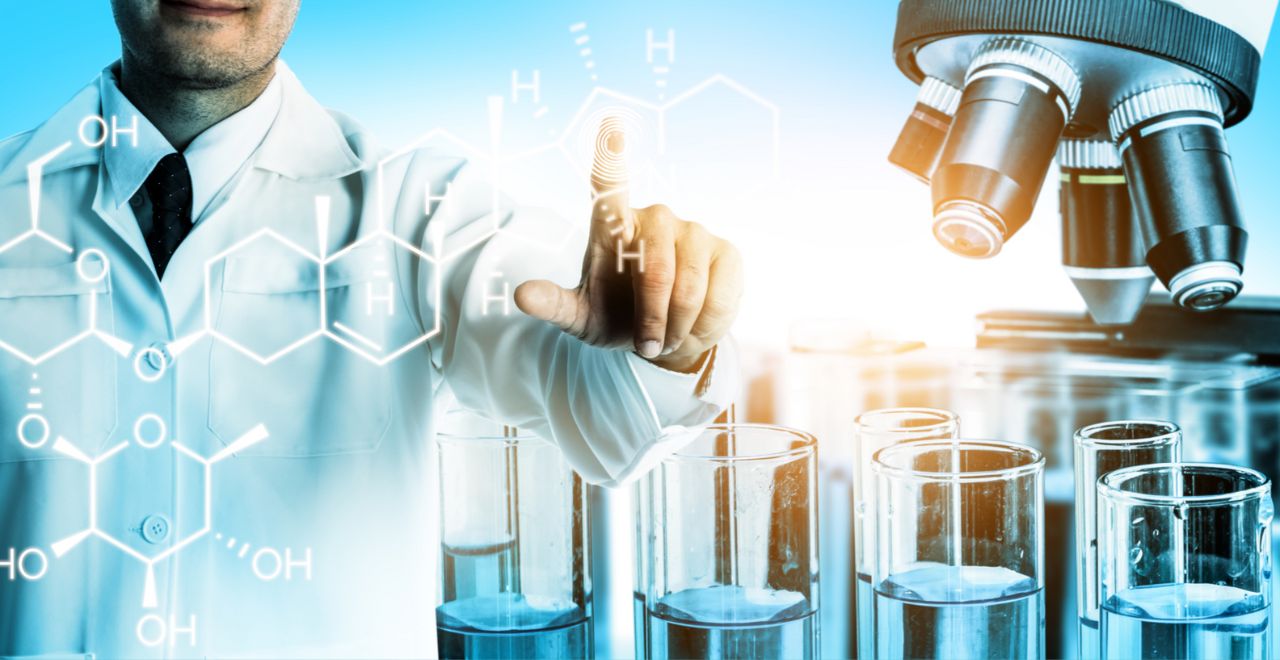Our Research & Development Department – What happens behind closed doors?
For Science Day, we conducted an interview with Dr. Hagen Thielecke, the Director of Research and Development at Vanguard AG. Dr. Thielecke primarily focuses on advanced medical products tailored to minimal-invasive diagnostics and therapies. Additionally, he works on optimizing processing and manufacturing procedures for sterile medical products. After his academic career, he began his professional journey at the Fraunhofer Institute for Biomedical Engineering (IBMT), where he earned a Doctor of Engineering (Dr.-Ing.) degree with the highest distinction at the University of Saarland. For his pioneering work in the field of biomedical engineering, particularly his contributions to the non-invasive characterization of biological cells and tissues, he received the prestigious Sensor Award for Innovation from the AMA Association for Sensors.
In the interview, he explains various aspects, including the specifics of remanufacturing medical product
1. What is the professional background of the employees in the Research & Development Department?
Dr. Hagen Thielecke: The department comprises of several interdisciplinary teams. The employees’ professional background ranges from engineers, biologists, and chemists to specialists in clinical issues. Engineers specialize in areas such as mechanics, electrical engineering, embedded systems, materials science, and process engineering.
2. How can the work in research and development be envisioned? What does it involve?
Dr. Hagen Thielecke: Our research and development department has a team dedicated to developing medical products and processes for remanufacturing. Another team focuses on developing devices and procedures required for remanufacturing and non-destructive testing of medical products.
For the development of remanufactured medical products, relevant specifications are first developed based on risk analyses, new products, and technical standards. Additionally, remanufacturing processes and techniques must be developed to enable gentle, reliable, cleaning, disinfection, sterilization, non-destructive testing and efficient disassembly and assembly of the products. If any part needs replacement during remanufacturing, construction drawings are created.
Once the development of product specifications and manufacturing processes is complete, it must be verified that the medical products comply with the developed product specifications after undergoing the specified remanufacturing processes. Employees of the development teams collaborate with manufacturers, clinicians, commissioning biological and technical testing laboratories.
After the successful design verification and product and process validation, collaboration with the Regulatory Affairs team is necessary for certification.
Research activities involve developing new ideas and concepts for methods and procedures and creating conditions for the practical implementation of these ideas and concepts.
3. What challenges exist in remanufacturing medical products compared to other industries?
Dr. Hagen Thielecke: Unlike most other industries, manufacturers of medical products must not only demonstrate the safety and performance of their products but also meet extensive regulatory requirements. This applies to the remanufacturing of medical products as well.
Specific challenges in remanufacturing include material- and product-friendly processes, especially for cleaning and sterilization, as well as disassembly for cleaning. Many complex medical products, for example, consist of thermolabile plastics. For these plastics, only low-temperature processes and chemicals compatible with the plastics and not adversely affecting biocompatibility may be used. When complex medical products are introduced as disposable products by manufacturers, cooperation between manufacturers is often absent.
In these cases, an analysis of the construction, material, and relevant product properties is required. Suitable methods for detecting product changes must also be developed.
4. A new electrophysiology catheter is entering the market. What is the process for Vanguard AG to quickly offer remanufacturing services?
Dr. Hagen Thielecke: Appropriate classification of products based on structure, materials, and functions allows the use of standardized processes. This saves a lot of time in the development of remanufacturing processes for the new catheter since not every sub-process needs to be newly developed but can be assembled precisely from existing process components. Nevertheless, the safety and performance of the new catheter must be specifically demonstrated in any case. Standardized test plans and test procedures are also used for this purpose.

Dr. Hagen Thielecke, Direktor für Forschung und Entwicklung
5. How is the collaboration with the OEM and regulatory authorities structured?
Dr. Hagen Thielecke: When the remanufacturing process is developed in collaboration with the OEM, we coordinate the project content and plan with the OEM. In the project, our development team works closely with the OEM’s development unit. Ideally, collaboration begins in the design phase of the medical product. In this case, we can contribute our knowledge most effectively, and optimal remanufacturing can be “in-built” in the product. An optimal remanufacturing process is also optimal for the circular economy. Unfortunately, collaboration with the OEM is still a challenge for single-use products.
6.What projects are you currently working on?
Dr. Hagen Thielecke: Currently, the transfer process of product certifications from the existing Medical Device Directive (MDD) to the Medical Devices Regulation consumes a lot of time and resources. Nevertheless, Innovation projects would of course be preferable in this regard.
7. How is Vanguard AG committed to environmental sustainability and how does it contribute to reducing the ecological footprint in healthcare?
Dr. Hagen Thielecke: The core of our business model and development activities is the circular economy. We enable the remanufacturing of many complex medical products, promoting a greener healthcare in the process.
8. What success are you particularly proud of?
Dr. Hagen Thielecke: That the remanufacturing of many complex high-tech products has proven successful in practice. As a result, many more patients can be treated with the best medical products according to the latest technology. At the same time, the reuse of medical products has a positive impact on global warming and resource consumption.
Thank you for the exciting exchange! 😊




